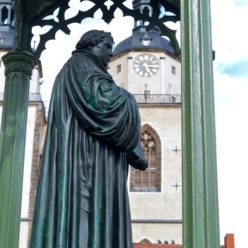A. Korn1, M. Krüger2, S. Roßner3, D. Huster1
1Institute of Medical Physics and Biophysics, University of Leipzig, D-04107 Leipzig, Germany.
2Institute of Anatomy, University of Leipzig, D-04103 Leipzig, Germany
3Paul-Flechsig-Institut für Hirnforschung, Liebigstraße 19 D-04103 Leipzig, Germany
β-Methylamino-L-alanine (BMAA) was found as a possible reason for increased ALS-PDC (amyotrophic lateral sclerosis–parkinsonism/dementia complex) [1]. It is a non- proteinogenic amino acid produced by cyanobacteria that can be enriched via the food chain in plants, seafood, higher animals, and humans [2]. This is a critical factor because cyanobacteria are known for their excessive blooms not only in marine ecosystems but also in lakes that are used as fresh water source for millions of people supplying BMAA to human nutrition [3].
Although BMAA is known as a neurotoxin for several decades, its mode of action is still topic of controversial discussions. One of the more commonly accepted pathologic pathways is its function as a neurotransmitter mimetic where it can overstimulate glutamate receptors, deplete glutathione, increase free radical concentration and subsequently leads to neuronal damage [4]. Besides this, BMAA can also be misincorporated in proteins. Recent findings showed that serine tRNA synthetase accepts BMAA as substrate which may finally lead to a serine-BMAA substitution [5].
Assuming that BMAA can substitute Ser8 or Ser26 of Amyloid-β, the question arises if this may alter Amyloid-β fibrillation and structure leading to a higher risk for neurodegenerative pathogenesis.
References
[1] J. Pablo, S.A. Banack, PA Cox, T.E. Johnson, S. Papapetropoulos, W.G. Bradley, A. Buck, D.C. Mash, Acta Neurologica Scandinavica, 120, 216 (2009) (link)
[2] C.L. Garcia-Rodenas, M. Affolter, G. Vinyes-Pares, C.A. De Castro, L.G, Karagounis, Y.M. Zhang, P.Y Wang, S.K Thakkar, Nutrients, 8, 606, (2016) (link)
[3] M. Monteiro, M. Costa, C. Moreira, V.M. Vasconcelos, M.S. Baptista, Journal of Applied Phycology, 29, 879 (2017) (link)
[4] F. D’Mello, N. Braidy, H. Marcal, G. Guillemin, F. Rossi, M. Chinian, D. Laurent, C. Teo, B.A. Neilan, Neurotoxicity Research, 31, 245 (2017) (link)
